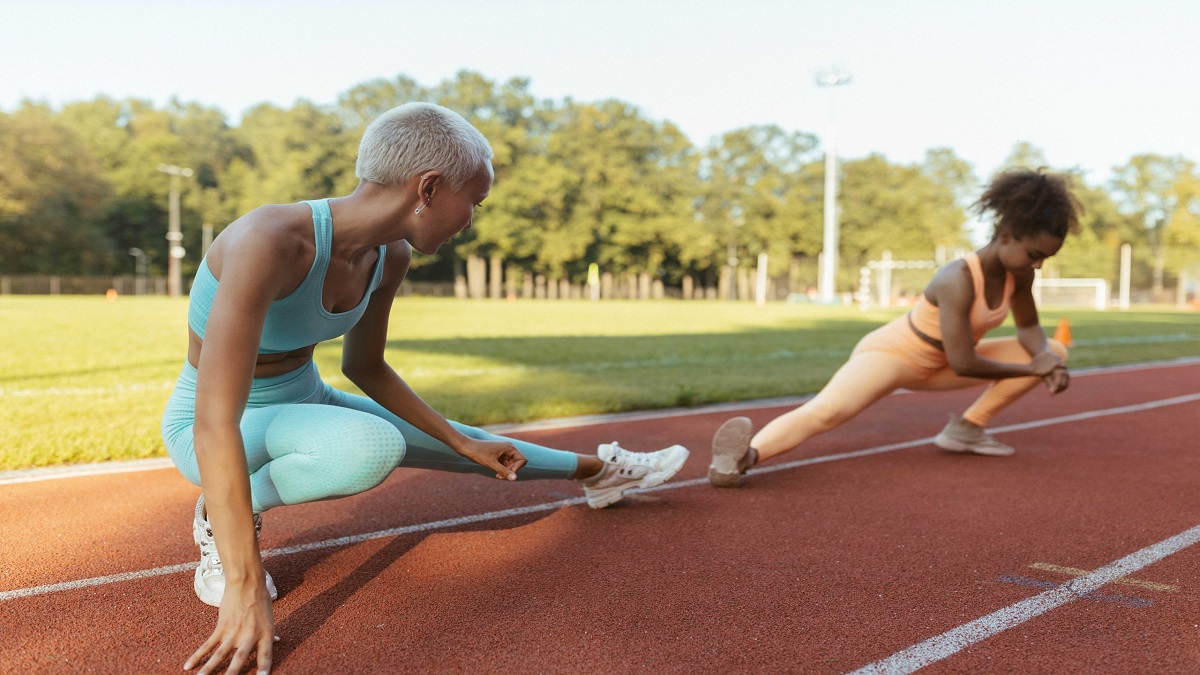You might think that stretching is only done by runners or gymnasts. However, in order to maintain our mobility and independence, we must all stretch. “Many people are unaware that stretching must be done on a regular basis. It should be done on a daily basis “According to David Nolan, a physical therapist at the Harvard-affiliated Massachusetts General Hospital.
Stretching is one of the most effective techniques to enhance flexibility and ensures good health as it improves muscles strength and range of motion at different joints. Here are a few reasons why stretching is beneficial.
What are the advantages of stretching?
increased range of motion and flexibility
This is the most obvious benefit of regular stretching and is usually what motivates people to begin a stretching programme.
However, the reasons for stretching are usually much more complex. For instance, why do you want to improve your flexibility?
Is it to improve your athletic performance, posture, or injury prevention?
Injury avoidance
Being flexible can aid in injury prevention. This includes both acute injuries like hamstring strains and overuse injuries like IT band syndrome or plantar fasciitis.
Stretching has long been used in the warm-up process. It is believed that having flexible muscles can help prevent acute injuries by gently stretching the muscle through its range of motion before exercise.
Warm-ups should now include dynamic (active) stretches rather than static stretches.
DOMS Prevention
DOMS (Delayed Onset Muscle Soreness) occurs 24 to 48 hours after exercise. It is believed to be caused by microscopic tears in the muscle.
Stretching before and after exercise is thought to help reduce this damage.
Improving Posture
Muscle imbalances are to blame in many cases of poor posture that has developed over time.
A good example is when people slouch over a computer for long periods of time, their chest muscles shorten.
Improved posture is another advantage of stretching these muscles.
Read More: The use of manual therapy techniques to improve range of motion and decrease pain – About Pakistan
Increasing athletic performance
Athletics and gymnastics, for example, clearly require a high level of flexibility.
Even athletes in sports where flexibility is not immediately thought to be a key component, such as rugby, can improve their performance by becoming more flexible. Muscles must be flexible in order to be healthy.
As previously stated, this will help to prevent injuries, but it will also allow you to develop strength through the full range of motion at the joint.
This gives you an advantage over someone with a restricted range.
Stress reduction
Muscle tightness is frequently associated with stress; when we are stressed, we tend to tighten up.
Consider the neck muscles. Stretching relaxes these muscles as well as you!
Flexibility influencing factors
The amount of movement available at a joint is defined as flexibility. The amount of movement available at the hip joint, for example, is determined by how far the leg can move in each of the permitted motions (e.g. flexion – raising the leg up in front). The term flexibility is synonymous with mobility or suppleness.
The shoulder, which is a ball and socket joint, is more flexible (or mobile) than the knee, which is a hinged joint.
Elasticity of muscle tissue: Muscles that are injured, under-conditioned, or tight are less flexible.
Tendon elasticity: Tendons should stretch slightly but not to the extent of muscles.
Ligament laxity: After an injury, ligaments can become lax, resulting in excessive joint movement. Some people are born with lax ligaments as well.
A muscle’s ability to relax: Some muscles, usually postural, are unable to fully relax due to increased tone.
Temperature of the joint and associated tissues: Joints and muscles are more flexible at 1 to 2 degrees above normal body temperature.
Bony structures that limit movement: Some people develop spurs, which are bony growths that can limit joint motion.
Environment temperature: Warmth promotes flexibility.
Time of day: Flexibility is at its lowest in the morning.
Injuries: Muscles frequently tighten to protect themselves from injury, resulting in decreased flexibility.
Flexibility tends to decline with age.
Gender: Females are more adaptable than males on average.
How can I increase my flexibility?
Stretching exercises are the most commonly used method of increasing flexibility. There are numerous ways to stretch:
Static Stretching
he muscle is stretched to its maximum length and held there for 10 to 60 seconds. If the stretch disappears, the body part is moved a little further until the stretch returns. This can be done with a partner as well.
Active or dynamic stretching
Dynamic stretches involve moving a muscle through its entire range of motion, beginning with a small movement and gradually increasing the range and speed of the movement.
PNF
PNF is an abbreviation for Proprioceptive Neuromuscular Facilitation.
Hold-relax and contract-relax stretching are included. Only a trained professional should perform this type of stretching. PNF stretching is based on the theory of reciprocal inhibition, in which the opposite muscle is contracted first to encourage full relaxation and a subsequent stretch, for example, contraction of the hip flexors to stretch the hamstrings (hip extensors).
Muscle Energy Techniques (METs)
These techniques are similar to PNF techniques, but the muscle forces used are much lower. In addition, the stretching muscle is contracted; for example, to stretch the hamstrings, they must first be contracted.
Top tips for flexibility
There are additional ways to improve flexibility. These are some examples:
Sports massage improves muscle flexibility by stretching the fibres, breaking down adhesions, trigger points, and scar tissue, and warming the muscles before stretching.
Complete thorough warm-ups: Warming up before exercise will gradually raise the temperature of your muscles and, as a result, your flexibility, which will help you avoid injuries.
Stretching after exercise can help to prevent muscle stiffness caused by muscle damage sustained during exercise.
Stretching first thing in the morning helps to establish muscle length for the day.
Strengthen the opposite muscle: If you have tight hamstrings, you should also work on strengthening the hip flexor muscles, such as the Rectus Femoris and Iliopsoas. This is because these muscles work to keep the hamstrings in their extended position (hip flexion).
Warm the muscle: Before stretching, use a warm pack or a warm bath to help you get better results.
Consume plenty of water: Keeping hydrated aids in the removal of toxins from the muscles.
Conclusion
Stretching keeps the muscles flexible, strong, and healthy, which is necessary for maintaining joint range of motion. Muscles shorten and become tight without it. When you activate the muscles, they become weak and incapable of fully extending. As a result, you are more likely to experience joint pain, strains, and muscle damage.





















